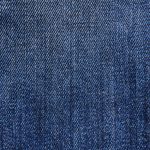Are you unsure about how to determine the quality of fabric? Look no further! In this article, we will guide you through 10 key steps to evaluate fabric quality.
By assessing the fabric’s composition, examining its weave, and checking for factors like weight, color fastness, and thread count, you can make informed decisions when purchasing fabric.
We’ll also cover important considerations like breathability, pilling resistance, shrinkage potential, and fabric care instructions.
Let’s get started on your fabric quality evaluation journey!
Table of Contents
Assess the Fabric’s Composition
Assessing the fabric’s composition involves examining its fiber content, which influences its overall quality and performance. To evaluate a fabric’s quality, it is important to understand its texture and strength.
The texture of a fabric refers to its feel, whether it is smooth, rough, or somewhere in between. Assessing the texture is crucial as it can impact comfort and durability. Smooth and soft textures are often preferred for garments that will be in direct contact with the skin, while rough textures may be more suitable for upholstery or heavy-duty applications.
Determining the fabric’s strength is also crucial in assessing its composition. Strength is determined by the type and arrangement of fibers in the fabric. Fabrics with a higher proportion of synthetic fibers, such as polyester or nylon, tend to be stronger and more resistant to wear and tear. On the other hand, fabrics with a higher proportion of natural fibers, such as cotton or silk, may have a softer and more luxurious feel but may not be as strong.
Examine the Fabric’s Weave
When evaluating fabric quality, one key step is to examine the fabric’s weave. The weave of a fabric determines its durability and affects its appearance.
Different weaves result in different textures, giving fabrics unique qualities.
Weave Determines Durability
To determine the durability of a fabric, examine its weave. The weave structure plays a crucial role in determining how well the fabric will hold up over time.
Here are three key factors to consider when evaluating the weave:
-
Tightness: A tightly woven fabric is generally more durable than a loosely woven one. Look for a tight and compact weave that will withstand wear and tear.
-
Evenness: Check for an even distribution of threads in the fabric. A uniform weave ensures that stress is evenly distributed, preventing weak spots and potential damage.
-
Strength: Evaluate the strength of the fabric by pulling on it gently. A strong fabric will resist stretching and tearing, indicating its ability to withstand regular use.
Different Weaves, Different Textures
Examine the fabric’s weave to understand the different textures created by various weave structures. Different fabric finishes can be achieved through the use of different weaves. For example, a plain weave creates a smooth and flat texture, while a satin weave gives the fabric a shiny and lustrous appearance.
Additionally, the fabric’s weave affects its drape and movement. Fabrics with a looser weave tend to have a more fluid drape and offer greater freedom of movement, while fabrics with a tighter weave may be stiffer and less flexible.
Weave Affects Fabric Appearance
To evaluate fabric quality, it’s important to understand how the weave affects the appearance of the fabric. The weave refers to the way the threads are intertwined to create the fabric’s structure. Here’s how the weave impacts fabric appearance:
-
Texture: The weave determines the texture of the fabric. A tight weave like satin creates a smooth and shiny texture, while a loose weave like gauze creates a lightweight and airy texture.
-
Pattern: Different weaves can create unique patterns on the fabric. For example, a twill weave creates diagonal lines, while a plain weave creates a simple checkerboard pattern.
-
Drape: The weave affects how the fabric hangs or drapes. A tightly woven fabric will have more structure and less drape, while a loosely woven fabric will have more drape and fluidity.
Check for Fabric Weight and Thickness
When evaluating fabric quality, it’s important to consider the fabric weight and thickness as they directly impact the overall durability and performance of the material. The fabric weight refers to the amount of fabric in a given area, while the fabric thickness measures the distance between the two surfaces of the fabric. These factors play a crucial role in determining the fabric’s suitability for different applications.
Fabric weight and thickness are closely related to fabric texture and durability. Fabrics with a higher weight and thickness tend to be more durable and less prone to wear and tear. They’re often used for heavy-duty applications such as upholstery, outdoor furniture, and workwear. On the other hand, fabrics with a lighter weight and thinner thickness are more suitable for lightweight garments and delicate applications.
To evaluate fabric weight and thickness, you can simply hold the fabric in your hand and feel its weight and thickness. A heavier and thicker fabric will feel more substantial and denser, while a lighter and thinner fabric will feel more lightweight and airy. Additionally, you can also check the fabric specifications provided by the manufacturer, as they often include information on weight and thickness.
Evaluate the Fabric’s Color Fastness
When evaluating fabric quality, it’s important to test the color fastness. This refers to the fabric’s ability to retain its color without fading or bleeding.
Color fastness is crucial because it ensures that the fabric will maintain its appearance even after repeated washing or exposure to sunlight.
Several factors, such as dye type, fabric composition, and care instructions, can affect the color fastness of a fabric.
Testing Color Fastness
Check for color fastness by washing the fabric with detergent and water. This step is essential to evaluate the fabric’s ability to retain its color without fading.
Here are three testing methods you can use to assess the color fastness of a fabric:
-
Rubbing Test: Rub a white cloth on the fabric’s surface to check if any color transfers. If the color transfers easily, it indicates poor color fastness.
-
Washing Test: Wash the fabric according to the recommended instructions, and observe if the color fades or bleeds. If the color changes significantly, it suggests poor color fastness.
-
Light Test: Expose the fabric to light for an extended period, either natural or artificial, and check for any color fading. A significant color change indicates poor color fastness.
Importance of Colorfastness
Assessing the color fastness of a fabric is crucial for determining its quality and ensuring its ability to retain color without fading. Colorfastness testing allows you to evaluate how well a fabric’s color withstands various factors such as washing, exposure to light, and rubbing.
It’s an important aspect of fabric quality as it directly affects the lifespan and appearance of the fabric. Fabrics that lack colorfastness may fade quickly, leading to a dull and worn-out appearance. This can be a major issue, especially for fabrics used in clothing or home furnishings.
Factors Affecting Colorfastness
To evaluate the fabric’s color fastness, consider the various factors that can affect its ability to retain color without fading. Here are three important factors that can impact the dye retention of a fabric:
-
Type of Dye: Different dyes have varying levels of colorfastness. Some dyes are more prone to fading when exposed to sunlight or washed repeatedly, while others retain their color for longer periods.
-
Fabric Composition: The type of fabric used can also affect colorfastness. Natural fibers like cotton and silk tend to have better dye retention compared to synthetic fibers such as polyester or nylon.
-
Exposure to Sunlight: Sunlight is a major factor that can cause color fading. UV rays can break down the dye molecules, leading to loss of color. Fabrics that are exposed to direct sunlight for long periods are more susceptible to fading.
Considering these factors will help you determine the colorfastness of a fabric and make an informed decision before purchasing or using it.
Inspect the Fabric’s Thread Count
To accurately evaluate the fabric’s quality, start by examining the thread count. The thread count refers to the number of threads per square inch of fabric. It’s an important factor in assessing the fabric’s durability and overall quality. A higher thread count generally indicates a higher quality fabric that’s more durable and long-lasting.
When inspecting the thread count, you’ll want to check for both the horizontal (weft) and vertical (warp) threads. A fabric with a higher thread count will have more threads tightly woven together, resulting in a smoother and more durable fabric. On the other hand, a lower thread count may result in a fabric that’s less durable and prone to tearing.
In addition to assessing the fabric’s durability, the thread count can also affect the fabric’s texture. Fabrics with a higher thread count tend to have a softer and smoother feel, while fabrics with a lower thread count may feel rougher and less luxurious.
To test the fabric’s texture, run your fingers over the surface of the fabric. Pay attention to how it feels against your skin. A fabric with a higher thread count should feel smooth and silky, while a fabric with a lower thread count may feel rougher and less comfortable.
Test the Fabric’s Stretch and Recovery
To evaluate the fabric’s stretch and recovery, you can perform a simple test. This will give you an idea of how well the fabric will be able to stretch and then return to its original shape. Here are three steps you can follow to test the fabric’s elasticity and recovery:
-
Stretch Test: Start by taking a small piece of the fabric and gently stretching it. Note how much it stretches and how easily it returns to its original shape. A fabric with good elasticity will stretch without losing its shape and quickly recover to its original state.
-
Recovery Test: After stretching the fabric, hold it in the stretched position for a few seconds. Then release it and observe how well it recovers. A fabric with good recovery will bounce back and regain its original shape without any wrinkles or distortions.
-
Repeat Test: Repeat the stretch and recovery test multiple times to see if the fabric maintains its elasticity and recovery over repeated use. A fabric that consistently stretches and recovers well is more likely to have better quality and durability.
Consider the Fabric’s Breathability
Now, let’s delve into the fabric’s breathability, which is another important aspect to consider when evaluating fabric quality. Breathability refers to the fabric’s ability to allow air and moisture to pass through it. This is a crucial factor, especially in clothing, as it affects comfort and overall wearability.
When a fabric is breathable, it offers several benefits. Firstly, it allows air to circulate, keeping you cool in hot weather. This is particularly important for activewear or summer clothing. Secondly, breathable fabrics wick away moisture, such as sweat, from your skin. This helps to keep you dry and prevents the growth of bacteria, which can cause unpleasant odors. Lastly, breathable fabrics are less likely to trap heat, reducing the risk of overheating.
When choosing breathable fabrics, consider natural materials such as cotton, linen, or silk. These fibers have natural breathability properties and are comfortable to wear in different climates. Additionally, look for fabrics that are labeled as breathable or have moisture-wicking properties.
Assess the Fabric’s Pilling Resistance
Assess the fabric’s pilling resistance to determine its durability and long-term appearance. Pilling refers to the tiny balls of fiber that form on the surface of the fabric over time.
To ensure you choose a high-quality fabric that will resist pilling, follow these steps:
-
Look for fabric made from long-staple fibers: Fabrics made from longer fibers, such as Egyptian cotton or silk, are less prone to pilling. These fibers are stronger and more resistant to friction, which is the main cause of pilling.
-
Check the fabric’s thread count: Higher thread count fabrics tend to be more tightly woven, reducing the likelihood of pilling. Look for a thread count of at least 200 for cotton fabrics.
-
Examine the fabric’s construction: Fabrics with a tight weave or knit structure are less likely to pill. Avoid fabrics with loose weaves or open knits, as they’re more prone to pilling.
Evaluate the Fabric’s Shrinkage Potential
To ensure you select a high-quality fabric that will maintain its size and shape, evaluate the fabric’s shrinkage potential. Shrinkage refers to the reduction in size that occurs when fabric is exposed to heat, moisture, or tension. By assessing the fabric’s shrinkage potential, you can determine how much it may shrink and whether it will be suitable for your intended use.
To evaluate the shrinkage potential of a fabric, you can perform a simple test. Start by measuring the fabric’s dimensions before and after washing or exposing it to moisture and heat. Take note of any changes in length or width. If the fabric significantly shrinks, it may not be suitable for projects where precise sizing is important.
Additionally, consider the fabric’s durability during the shrinkage potential evaluation. A fabric that shrinks excessively may also lose its strength and integrity. Check for any signs of weakness, such as fraying or tearing, after subjecting the fabric to shrinkage tests.
Check for Fabric Care Instructions
To ensure you properly care for the fabric and maintain its quality, it’s important to check for the fabric care instructions. These instructions provide valuable guidance on how to clean, wash, and care for the fabric, helping you avoid any potential damage or deterioration. Here are three reasons why checking for fabric care instructions is crucial:
-
Preserve fabric composition: Fabric care instructions inform you about the fabric’s composition and any specific requirements it may have. For example, certain fabrics may require gentle washing or dry cleaning to prevent shrinkage or color fading. By following these instructions, you can ensure that the fabric’s composition remains intact, prolonging its lifespan.
-
Prevent damage: Fabric care instructions outline the best practices for cleaning and maintaining the fabric. They may include recommendations on water temperature, detergent type, and ironing instructions. By following these guidelines, you can prevent damage such as pilling, stretching, or discoloration, which can compromise the fabric’s quality.
-
Retain fabric quality: Proper care and maintenance can help retain the fabric’s original quality and appearance. By following the fabric care instructions, you can prevent wrinkles, color bleeding, or loss of shape, ensuring that the fabric remains in optimal condition for a longer time.
Frequently Asked Questions
How Do I Determine if a Fabric Is Suitable for Outdoor Use?
To determine if a fabric is suitable for outdoor use, consider its durability and weather resistance. Assess factors like fabric strength, UV resistance, and water repellency. These qualities will ensure the fabric can withstand outdoor conditions.
Can I Machine Wash and Dry the Fabric, or Is It Dry Clean Only?
You can determine if a fabric is machine washable or dry clean only by checking the fabric care instructions. Look for labels that specify machine washability or dry cleaning requirements to ensure proper care.
Does the Fabric Have Any Specific Requirements for Ironing or Steaming?
To evaluate fabric quality, consider its ironing and steaming requirements. Check if the fabric needs special care or can be easily ironed or steamed. Always follow the fabric’s specific instructions for optimal results.
Is the Fabric Prone to Fading or Discoloration When Exposed to Sunlight?
To prevent fading or discoloration when exposed to sunlight, you can use fading prevention techniques such as keeping the fabric away from direct sunlight or using UV-blocking sprays. Fabric discoloration can be caused by factors like sun exposure and chemical reactions.
Can the Fabric Withstand Frequent Use and Still Maintain Its Original Appearance?
Can the fabric withstand frequent use and still look good? Evaluate fabric durability and maintenance. Look for fabrics that are resistant to wear and tear, and easy to clean and maintain.
- How Does Ring Spun Cotton Affect Garment Fit and Shape Retention? - August 13, 2024
- What Are the Challenges in Producing Ring Spun Cotton? - August 13, 2024
- Is Ring Spun Cotton Suitable for Plus-Size Clothing? - August 13, 2024




